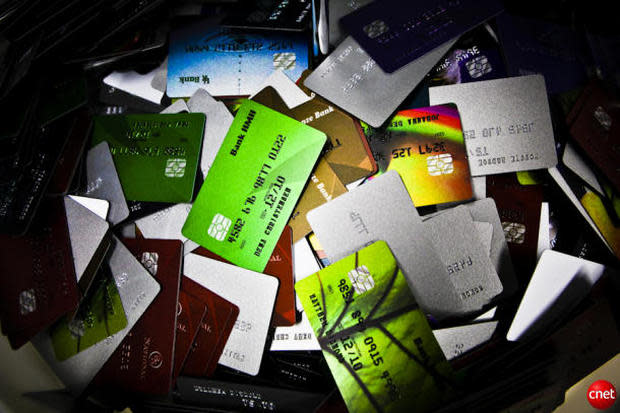Improved analytics reduce false positives in credit card activity

Image: James Martin/CNET
When I was a vice president at a banking and lending institution years ago, one of our board members was trying to make a purchase at a large box store, and his credit card was declined even though it shouldn't have been. The situation was embarrassing for him, and it didn't over well for those of us in the C-suite, either.
The board member was the victim of a "false positive," which arises when fraud detection software blocks your card because the card has been identified as the vehicle of potentially fraudulent activity when it isn't. After the cardholder is denied credit, he must notify his financial institution so someone in the card services department can verify the goodness of his card and unblock it. The situation is especially compromising for those who are traveling abroad, with limited access to their home financial institutions.
Against this backdrop is the heartening news that companies are now applying superior big data analytics in credit card verifications. These analytics have the potential to drive down the number of false positives that occur in the fraud detection process.
"We can analyze a consumer's credit card transaction history and also compare this against different archetypes of behavior that our big data analytics algorithms have 'learned,'" said Scott Zoldi, vice president of transaction services at FICO, which provides fraud analytics software to the financial services industry.
Zoldi gave an example of a person whose credit buying pattern shows purchases at grocery stores for items such as diapers, card activity at a day care center, and payments to children's educational suppliers. "If we have a purchaser with this type of buying pattern and we suddenly see a purchase of a child's sporting gun at a retail outlet, we would view this purchase as being in line with someone who has children and could be expected to make such a purchase," said Zoldi. "However, if we now see someone who has no children buying a child's sporting gun, that particular purchase might not be in line with the normal buying pattern."
Advance fraud analytics also tracks locations (e.g., certain stores, gas stations, or ATM machines) where customers make most of their purchases. "We develop a profile of the card using consumer that not only indicates what he is most likely to purchase with his card, but at which locations he is likely to purchase at."
These are the assessments that lead your credit card provider to contact you when it sees that you haven't left the country in over three years, and your credit card is now turning up in large purchases made half a world away.
On the front of false positives that occur when fraud precautions are too stringent, improved analytics are also dissecting more information about how buyers use their credit.
Firms like FICO use data repositories to produce analytics, and they also use real-time big data that streams in through point of sales (POS) points, ATM machines, and other outside entry points. "The software is able to make a decision on whether to allow a credit transaction to go through within ten milliseconds," said Zoldi.
The ability to draw on more substantial stored data, and to process real-time data quickly is a boon to credit card issuers, because reducing false positives can be as embarrassing as fraudulent activity.

